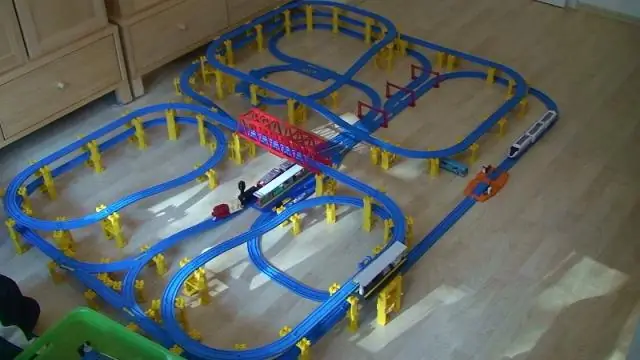
Table of contents:
- Author Bailey Albertson [email protected].
- Public 2023-12-17 12:53.
- Last modified 2025-06-01 07:32.
How to remove polyurethane foam and its traces from body parts

During the performance of certain construction work, polyurethane foam is used. It can fall on various parts of the body, thereby causing inconvenience to a person. How to remove cured polyurethane foam and its traces from various parts of the body? How to wash polyurethane foam from your hands?
Features of the composition and application of polyurethane foam
Polymers (polyol, isocyanates), propellant gas, stabilizers, catalysts are the basis of polyurethane foam, widely used in repair work and construction. It is used for the following purposes:
- Sealing - filling gaps in roofing materials, around window and door openings.
- Soundproofing - filling voids between walls.
- Bonding (fixing) door and window blocks, attaching insulating materials (for example, foam blocks).
At different times of the year, a suitable type of polyurethane foam is used: summer, winter, all-season. Depending on the characteristics of the composition and manufacturing technology, this substance hardens for 15-20 minutes.

When working, it is necessary to avoid getting foam on open skin
At the slightest contact with the face, skin of hands or hair, the foam must be quickly disposed of.
The best ways to remove foam from skin and hair
In modern construction, polyurethane foam is far from the last place. And it is not surprising, because it perfectly insulates various cracks, strengthens doors and windows. Anyone can get their hands dirty with this substance; you don't need to be a builder or repairman for this.

Polyurethane foam is widely used for various purposes
When doing repairs, it is important to know how to wash foam from your hands or hair. In such moments, you need to act quickly and wisely, using proven methods.
How to wash polyurethane foam from hands with vegetable oil
An available tool at hand is vegetable oil. It must be applied to the places of contamination, rubbed thoroughly for several minutes, then washed off with warm water and soap.
Video: how to remove polyurethane foam from your hands
How can you get rid of the composition using white spirit
Using a solvent to remove cured foam will not give the desired effect. Thinner for varnishes and paints (white spirit) makes it easy to wipe off only fresh foam. The method is quite simple: apply the solution to a rag or cotton pad and rub the traces of foam on your hands with it. It is worth remembering that the substance dries the skin greatly, therefore it is recommended to wash your hands after cleaning and moisturize them with oil or cream.
Video: removing a dried composition with a solvent
Removal of cured polyurethane foam with Dimexidum
The use of a pharmaceutical rescuer (Dimexidum) allows you to effectively clean the skin from foam. The drug is sold in every pharmacy and is inexpensive.

Inexpensive and effective tool for removing polyurethane foam - Dimexide
To remove foam, the diluted pharmaceutical product must be applied to a rag to remove any traces of foam on the skin or hair.
Polyurethane foam is removed from the hair worse than from the skin, but there is one simple way. To do this, take the drug Dimexide, apply it to your hair, leave it on for 30-40 minutes, then rinse with water. It is important to be careful when applying this method, namely:
- put rubber gloves on your hands;
- cover the nose and mouth with a gauze or cloth bandage;
- after rinsing the product from the hair, apply a regenerating balm or mask on them (not for safety reasons, but to maintain a healthy hair structure).
In addition, you can quickly get rid of the mounting foam on your hair - cut off a strand.
Video: how to remove foam with Dimexide
How to clean the composition mechanically
You can wipe off the foam mechanically - with nails, pumice stone or a hard brush. This method is harmless to health. It is important to carefully remove the foam to avoid damaging the skin. Regardless of the length of the process, nails can cleanse the skin and hair and completely remove the sealant.
What not to do to remove foam from hands, face or body
The first thing that comes to mind when your hands get dirty is the desire to wash them. This cleaning method works well with soil, food or cement, but not with this substance. Polyurethane foam is not washed off with water, even with the use of detergent!

Soap won't clean your hands of foam.
Some people get scared when they get polyurethane foam on their skin and start to panic. As a result, quite creative thoughts on the topic of "what to do" come to mind. You need to know what is better not to do in such situations:
- Do not use sharp objects (knife, metal brush, unsafe razor) to cut off foam residues from the skin.
- Do not apply special solvents that are intended for metal and wood ("Purex", "Russian professional", etc.). They can cause allergic skin reactions or burns.
- Do not imagine yourself as the hero of a fantastic action movie and in no case set fire to the stained skin.
There are many safe ways to clean foam from various parts of the body. Which method to give preference, everyone determines individually. When removing foam, you must adhere to proven recommendations.
Recommended:
How To Remove Hair Dye From Clothes, Remove It From Furniture And Other Items + Photos And Videos

How to chemically remove hair dye stains from fabrics, leather goods, carpets, hard surfaces, and wallpaper
How And How To Quickly Wash Your Hands From Nuts, Nutshells And Leaves, How To Remove Stains + Photos And Videos

How to effectively wash or clean your hands from brown stains that appear after peeling walnuts, and what to do if the juice of the peel gets on your clothes
How To Make A Slime At Home With Your Own Hands - Without Sodium Tetraborate And Glue, From Hand Cream, Shaving Foam And Other Ingredients, Recipes With Photos And Videos

Is it possible to make a slime at home. Types of slimes and recipes for their manufacture, depending on the desired properties. Toy care features
How To Remove Chewing Gum From Hair: Different Ways To Remove Chewing Gum From The Head + Photos And Videos

What to do if chewing gum gets stuck in your hair. How to remove chewing gum from hair without consequences: improvised means, tips, recommendations
How To Wipe Hair Dye From The Skin Of The Face, Hands, Nails Or Other Parts Of The Body + Photos And Videos

Effective ways to wipe hair dye stains from nails, face and hands. Handy tools, proven recipes, and unsafe but popular drugs
